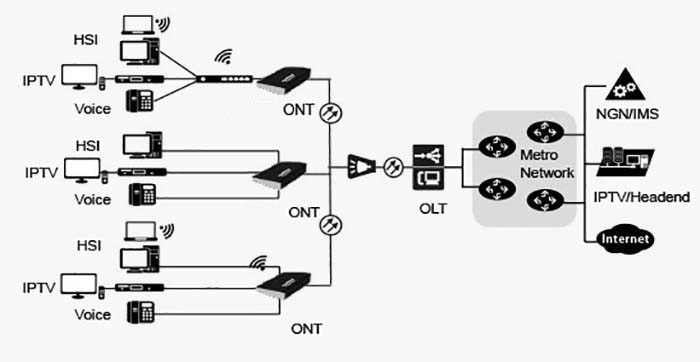Fiber optic networks have several advantages over traditional copper wire-based networks, and these advantages make fiber optic networks widely used in modern communications. Here are the main advantages of fiber optic networks over traditional networks:

Optical fiber networks have higher transmission rates and bandwidth, can support the transmission of more data, and meet the growing demand for network traffic. The bandwidth of optical fiber is much larger than that of copper wire, allowing for higher data transmission rates.
Optical fiber networks can transmit farther than traditional copper wire networks, tens or even hundreds of kilometers without significant signal attenuation. This makes fiber optic networks more suitable for long-distance communication needs, such as cross-city or cross-border network connections.
The transmission speed of optical fiber is very fast, and the propagation speed of optical signals in the optical fiber is close to the speed of light, so the optical fiber network has low transmission delay. This makes optical fiber networks very suitable for applications with high latency requirements, such as real-time audio and video transmission, online games, etc.
The data transmitted by optical fiber is transmitted in the form of optical signals in the optical fiber, which is not easy to be eavesdropped and interfered, and has high security. In contrast, traditional copper wire networks are vulnerable to electromagnetic interference and eavesdropping attacks.
Optical fiber networks have less signal attenuation and interference and are not affected by electromagnetic interference and lightning strikes, so they have high signal quality and reliability. This makes optical fiber networks more suitable for communication needs in harsh environments, such as high altitude areas or environments with strong electromagnetic interference.
Optical fiber transmission equipment is smaller and lighter than traditional copper wire equipment, and is more convenient to install and maintain. This gives optical fiber networks greater advantages in some special environments, such as aerospace, military and other fields.
To sum up, compared with traditional copper-based networks, optical fiber networks have higher bandwidth, longer transmission distance, lower transmission delay, higher security, lower signal attenuation and interference, and smaller Advantages such as size and weight. These advantages have made optical fiber networks a mainstream technology in the field of modern communications and have been widely used.